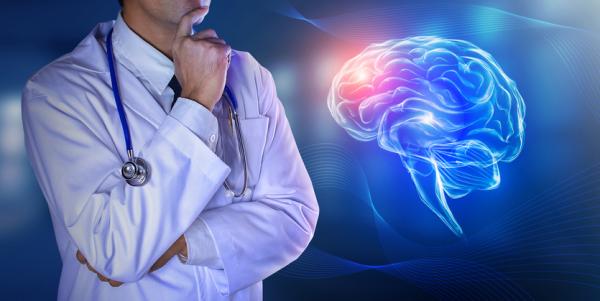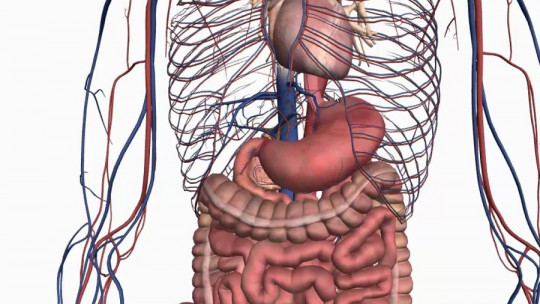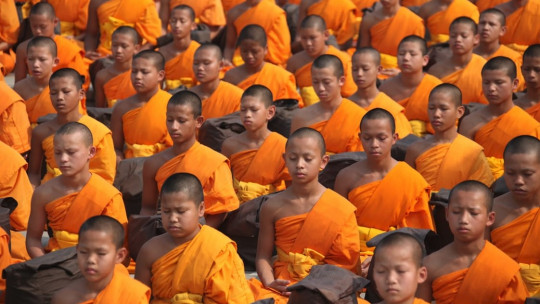
There are multiple stimuli that trigger our alarm reactions. Stress and potential threats alter us and cause the body to activate. This activation involves the consumption of a large amount of energy. However, After the moment when it is necessary to be alert, it is necessary to stop this energy expenditure by calming ourselves down relaxing our body systems and returning to a normal state.
This process, which, like the moment it is activated, is carried out at the physiological level in an unconscious and involuntary way, It is carried out by the parasympathetic nervous system
A subdivision of the autonomic nervous system
When we talk about the parasympathetic system we are referring to a nervous system or circuit that innervates the different systems of the body starting from the brain stem and following the spinal cord.
In this circuit we find that neurons do not directly connect brain and target organ, there are intermediate connections in the autonomic ganglia. Communication between neurons, both at the pre- and postganglionic level, occurs based on the transmission of acetylcholine.
Along with the sympathetic nervous system and the enteric system, the parasympathetic nervous system is one of the divisions of the autonomic or neurovegetative nervous system. which governs and controls the unconscious and involuntary processes essential for the maintenance of life, such as the heartbeat or breathing rate.
Main functions of the parasympathetic nervous system
The main function of the parasympathetic nervous system is to generate a state of rest that allows the body to save or recover energy, causing a relaxation of the body and recovering its state after the presence of activating stimuli. In this sense, apart from inducing relaxation, it also participates in carrying out digestion and in the reproductive response.
In this way we can consider the parasympathetic system the inverse reflection of the sympathetic system, because Both systems generally perform actions that oppose each other In this way, while the sympathetic prepares for action and in general causes an acceleration of the organism and its metabolism, the parasympathetic provokes reactions that prepare for the saving and recovery of energy, slowing down the system.
In short, the parasympathetic nervous system performs a series of automatic functions whose existence makes sense from the joint action with the sympathetic nervous system, with which it complements itself (producing effects opposite to it).
Neuroanatomical situation
Although the sympathetic nervous system has a large number of nervous innervations at very different levels of the spinal cord, In the case of the parasympathetic nervous system, this distribution is more concentrated and can be located especially in specific intracranial locations and in the sacral region of the spinal cord.
Thus, typically two divisions can be found, cranial and sacral
1. Cranial region
Within this region we can find connections with different regions, both at the level of the hypothalamus (in which the presence of the supraoptic-pituitary, paraventricular-pituitary and tubero-pituitary nerves stands out), midbrain (we find the ciliary ganglion, from which they arise. nerve connections that produce the movement and adjustment of the eye to light, the iris being able to contract thanks to it) and rhombencephalon (a large number of cranial nerves are located there). In this region of the parasympathetic nervous system highlight the presence and participation of many nerve fibers of great importance
For example, through the vagus nerve the system reaches the heart, lungs and digestive tract, causing different actions. Additionally, the glossopharyngeal nerve can also be found in this area, managing swallowing. The facial nerves also participated in this system, carrying information that allows the generation of saliva and mucus in the mouth and tears in the eyes.
2. Sacral region
In the lower part of the spinal cord we find the sacral vertebrae, which in adults are fused into a single bone structure. In this region, we can find one of the few connections of the parasympathetic nervous system that are not found intracranially In the sacrum we find ganglia that innervate the urogenital system, which is logical considering the section of the spinal cord in which it is located.
Reactions in the different innervated systems
The fact that the main nuclei of the parasympathetic system are located in parts of the brain (with the exception of those located in the sacral cord) makes it more difficult to imagine the type of action it carries out. To solve this problem, we proceed to indicate how it affects the multiple systems it innervates.
visual system
In dangerous situations, the human being dilates the pupil since it is necessary to be able to perceive the more the better in order to be able to detect and discriminate threatening stimuli. This is done to detect any hint of a possible threat in time and allow for a prompt reaction.
However, In a resting state it is not necessary to capture as much light The parasympathetic system is responsible for constricting the pupil, reducing the light that enters the visual system and is projected on the retina.
cardiac system
The parasympathetic system causes a response in the heart opposite to that of the sympathetic system. Since it is about reducing energy expenditure and recovering the body’s internal balance, heart rate and blood pressure slow blood flowing more slowly through the body.
Respiratory system
In the respiratory system, the parasympathetic acts by producing bronchoconstriction, that is, allowing its contraction and relaxation. It participates in its normal rhythm and allows the respiratory system to reduce the intake of oxygen in situations in which an increase in it has previously been required. This causes the energy obtained and used by the body to be within normal limits.
Digestive system
Although the body’s energy expenditure during digestion is high, which is why it stops in situations of tension in which all the available energy is needed, it is normal situations in which the body relaxes. its functioning resumes thanks to the parasympathetic system
In addition to recovering the normal state, this causes the body to be able to recover the energy reserves that it has lost, which is something fundamental. Thus, the parasympathetic system stimulates the movement of the digestive tract and the release of digestive enzymes. In the mouth, it stimulates saliva production.
Excretory system
In dangerous situations, excretion poses a risk as it requires a certain level of energy to carry it out, in addition to the risk posed by both the excretory process and the excretion itself (it can be used to locate the subject by smell or heat). However, the expulsion of waste is essential for the balance of the body. In this aspect the parasympathetic system innervates both bladder and anal sphincter, contracting the first and relaxing the second
genital system
The parasympathetic also has an important connection with human sexuality. And the thing is that when the organism is in a state of rest allows sexual arousal causing erection (both of the penis and the clitoris).

